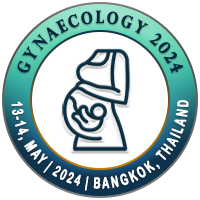
Carolina Trujillo Ibarra
Gynecology and Obstetrics Resident, MexicoTitle: Chorea as the first clinical manifestation of systemic lupus erythematosus without anti-phospholipid syndrome: case report and literature review
Abstract
Background: Chorea gravidarum is a rare condition characterized by irregular, unpredictable, spontaneous movements of short duration, changing location without defined sequence, and with the peculiarity of being involuntary. Currently, its incidence is estimated at 1 case per 2275 pregnancies.
Clinical case: Patient aged 30 years, 45 kg, height 1.65 m, BMI 16.5, blood pressure 110-78 mmHg, heart rate 136 bpm, respiratory rate 19 rpm, oxygen saturation 98%. She started with choreic movements at 12 weeks of pregnancy and titration of antinuclear antibodies 1:320, anti-DNA antibodies 150 IU/mL, C3 at 126 mg/dL and C4 at 31 mg/dL. The diagnosis of systemic lupus erythematosus was established based on EULAR/ACR criteria. At 32 weeks she had threatened preterm labor and progression, despite utero-inhibition, preeclampsia with severity criteria and neuropsychiatric manifestations with exacerbation of choreic movements. MRI reported no pathological findings and secondary antiphospholipid antibody syndrome was ruled out. After termination of pregnancy the involuntary movements characteristic of chorea gravidarum subsided.
Conclusion: Prenatal monitoring in the first trimester is essential for a favorable patient outcome; Early initiation of immunotherapy is crucial for perinatal outcomes as it decreases associated morbidity and mortality. Chorea is a disabling clinical manifestation, hence the importance of identifying its cause and initiating timely treatment.
Biography
WILL BE UPDATED SOON

